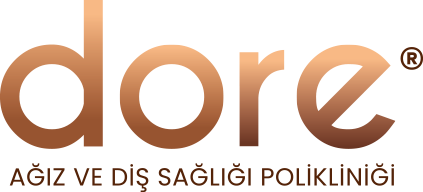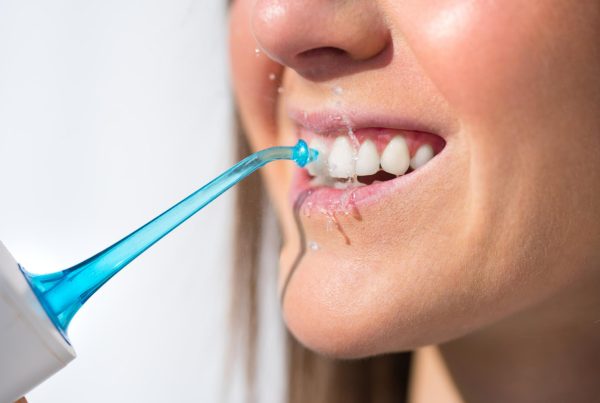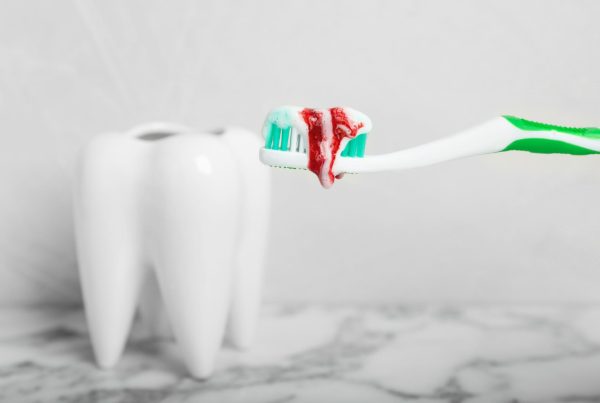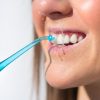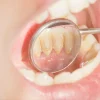Milk teeth begin to appear in the 6th month of infancy and this process continues until the age of 2.5-3. Milk teeth are 20 in total. Starting from the age of 6, permanent teeth begin to emerge from under the milk teeth, and it takes until the age of 11-13 for all permanent teeth to take their place in the jaw.
The main function of milk teeth is to provide solid nutrition. They contribute to the proper development of speech. When there are no front milk teeth, there may be distortions in the pronunciation of some letters. Milk teeth also protect the germs of permanent teeth and guide the permanent teeth until they are replaced by permanent teeth. This guidance disappears when milk teeth are extracted early. As a result, the area where permanent teeth will emerge becomes narrower, paving the way for orthodontic problems.
Milk teeth also indirectly contribute to jaw development through their chewing function. The development of chewing muscles ensures the proper development of the jaws. Having teeth is also important from an aesthetic point of view.
Most of the growth and development in children coincides with the time when milk teeth develop and are in the mouth. For this reason, ignoring milk teeth is a big mistake. Problems occurring in milk teeth need to be eliminated. Otherwise, the function will be impaired, permanent tooth germs may be damaged and the area where permanent teeth will emerge will be narrowed.
After the first milk tooth emerges, the teeth should be wiped with a finger brush or a wet cheesecloth at least twice a day. Then, brushing is started with toothpaste containing fluoride at recommended rates according to age groups. Under the age of 3, the amount of paste should be the size of a grain of rice, and between the ages of 3-6, the amount of paste should be the size of a pea. Parent-assisted brushing is especially recommended for children up to the age of 6. After the age of 6, control should be left to the child as the child’s motor skills develop, but it should be checked that he brushes for a sufficient time and in the recommended manner. The sooner a routine oral care habit is established, the better.
Dentist visits should begin in infancy. This is of great importance in reducing the risk of tooth decay. Additionally, children can be prevented from having a fear of the dentist with routine check-ups. Applications that do not disturb the child during the procedure, such as fluoride application and fissure sealant, help the child get used to the dentist and his procedures.
If decay occurs in milk teeth, it must be treated. Since the organic matter ratio of milk teeth is higher than that of permanent teeth, the rate of decay progression is faster. Depending on the depth of the decay, fillings or root canal treatment can also be applied to primary teeth. If there is no response to treatment and the tooth has to be extracted early, space loss in the area can be prevented with space maintainer applications. It is very important to keep baby teeth in the mouth until it is time for them to fall out.
Trauma is a very common situation in babies and children. Especially after the age of three, trauma to primary teeth increases. According to studies, the incidence of trauma varies between 10% and 30%. In case of trauma to primary teeth, a dentist should be consulted without delay. This period is very important for treatment.
My Baby’s Milk Tooth is Crooked, What Should I Do?
Crooked baby teeth may cause parents to worry. It is a problem generally encountered in the front teeth and does not require any intervention. As dentists, we want milk teeth to be more spaced apart in order to provide more space for permanent teeth to emerge. Because future permanent teeth are larger and need more space to align properly. Crooked milk teeth are a sign that future permanent teeth will also be problematic in this regard. In addition to the dentist check-ups that should be done every 6 months, attention should also be paid to orthodontic examinations after the age of 6. Early orthodontic interventions may be beneficial.
What Happens If a Milk Tooth is Extracted Early? What Should Be Done?
The most important function of milk teeth is to replace permanent teeth. For this reason, it is important to treat primary tooth problems and keep them in the mouth until it is time for them to fall out. Otherwise, the tooth will have to be extracted, the permanent teeth will slide into the space of the prematurely lost tooth and dislodge the other teeth that will emerge. In such a case, it is necessary to get support from fixed or movable placeholders.
Space maintainers are devices that prevent the loss of the resulting tooth space. Just as there are metal fixed space maintainers that are glued to the tooth next to the extracted tooth, there are also removable space maintainers that can be installed and removed by the patient. The physician applies whatever is appropriate for the patient and calls the patient for check-ups at regular intervals. The space maintainer is kept in the mouth until the permanent tooth begins to come in.
Things to Consider When Using Placeholders
There are some points that should be taken into consideration to avoid problems when using placeholders. We have briefly summarized these for you below.
- Hygiene must be taken into consideration to ensure that the space maintainer does not damage the teeth and surrounding tissues.
- Teeth should be brushed regularly and carefully.
- The placeholder should not be attempted to be removed with fingers or tongue.
- Movable placeholders should be removed while eating.
- You should go for regular dentist check-ups.
- Breakage or rupture should not be expected.
